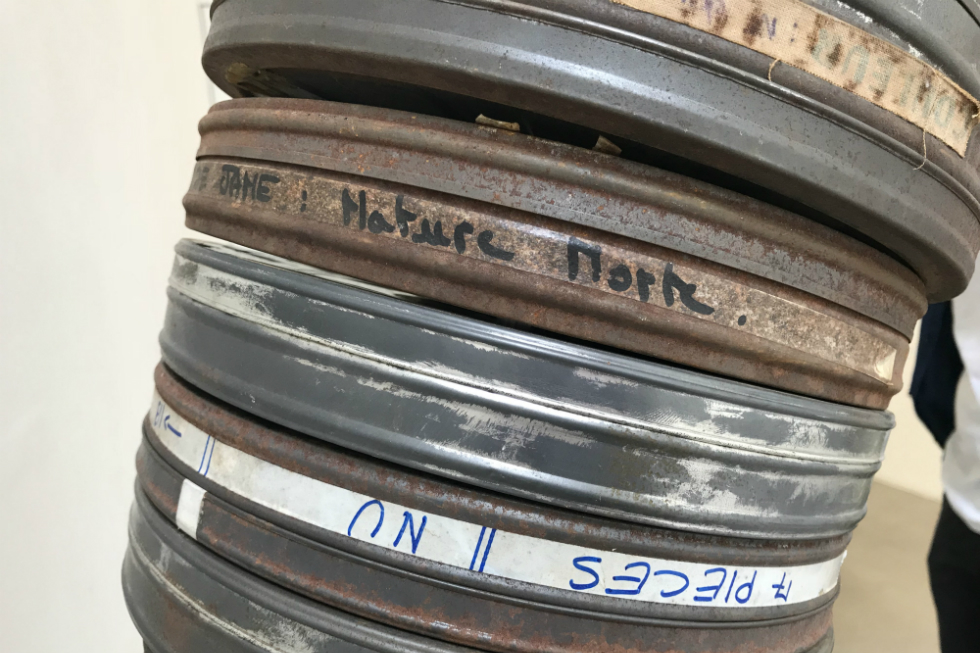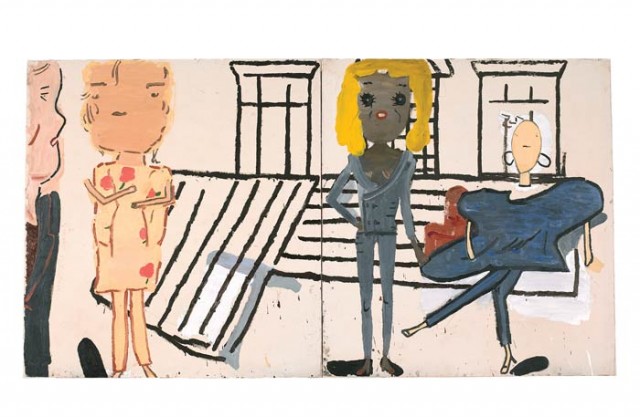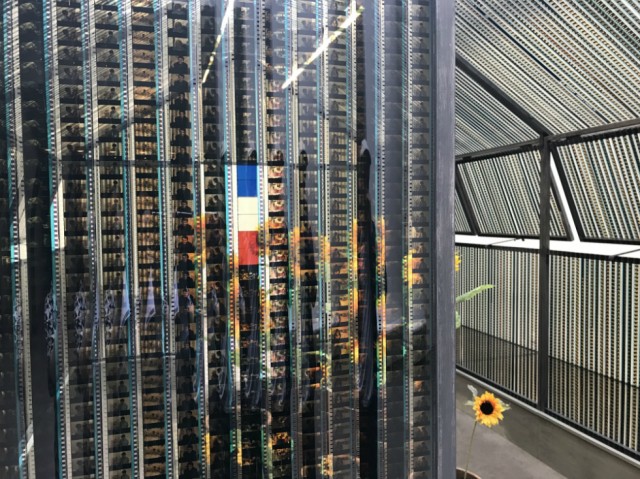Comment: Retrospective Age

The lifting of the age limit on Turner Prize nominees recently (previously restricted to artists 50 or under) was applauded and there has been something of an on-going trend for late-career recognition; a phenomenon not lost on Grace Denton…
There is a repeated phenomenon within the art world, when an older artist, after years of quiet working, suddenly rockets into the collective consciousness. Many artists are well over the legal age of retirement by the time they really begin to receive publicity or financial validation. Such recognition, followed in some cases by a high-profile retrospective, can be good news for underrepresented artists, who were not born with the wealth or connections that benefit some. Artists of colour, women, trans artists, gay artists, ‘folk’ artists – those seen to be ‘outside’ may finally become absorbed into the canon. But what does it say about this precarious industry, that those people were not given a platform until they’d done their time?
This has been swirling through my mind since Hauser and Wirth began representing Phyllida Barlow in her late 60s, after teaching for 40 years, and bringing up several artist children of her own. As a relative new-comer to the art-world, this struck me as comforting: Aged 30 I am only just finding my feet as an artist, so to realise I might still count as ‘emerging’ until my 80s is a balm against indecent haste. I would not have this luxury of time if I developed an urge to compete in the Olympics.
On being invited to represent Britain at the 57th Venice Biennale, Barlow expressed relief that she had not found fame sooner in life, having decades to hone her craft away from the limelight made this international stage much less daunting. Learning without hyper-critique or false fanfare might be useful, but it would’ve been great to see her work make a big, public impact sooner in life. Of course Barlow is well-heeled, with a creative and intellectual heritage behind her – she had the resources and support to carry on making and showing on a small scale without ever having to think about funding. Yet there is still something at play here that feels off.
Many articles published at the time of her Pavillion announcement decry the art world for neglecting Barlow’s talents, and in the same breath infantilise her. They paint her as a figure untouched by the politics at work in the fact she raised five children and nurtured countless young artists through her teaching, while her own work passed under the radar of these same outraged publications. I do not wish to guess at the gender dynamics within any particular household, but I’d guess Barlow’s opinion that raising children and making art simultaneously is “impossible” would be heard most often from the mouths of mothers.

Does the novelty of the older artist derive from ageism itself? Capitalist notions around labour lead us to dismiss those over a certain age – we see them as less nimble, less agile, both intellectually and physically. We expect so little of people over 65 that any sign of continued productivity is a delight to us. However in reality, any creative exploit is strengthened and deepened with repetition and persistence. We tap into vaster resources the more knowledge and experience we gain, so it should be no surprise that artists who are later in life can produce some of their most profound work.
Painter Rose Wylie, who received her plaudits well into her 70s, disliked the gimmick her age seemed to become: “It shouldn’t be about age or gender or anything. It should just be about the quality of the painting. That’s what I’d like to be known for. Paintings. Not because I’m old and the climate has changed and old people are welcomed.”
There is no solid metric for a career as an artist, with luck and circumstance playing a disproportionate role. We should not measure ourselves against the success or exposure of others, as it’s a far cry from a meritocracy. The overt celebration of older artists feeds the narrative that we simply carry on making work despite our audience, despite our social or financial means – that artists are a special, bulletproof breed driven by an insatiable thirst for making. But the carrot of the retrospective (indeed any platform), dangled in front of the artist, is contingent on so many factors that come into play decades before it. Do you make work that is of permanent substance? If not can you document it, and to a high standard? If it’s large do you have space to store and archive it? Do you have access to materials or workshops to fabricate the works you conceive? Can you maintain your practice long enough to satiate the curator who hasn’t even been born yet, who might one day deign to consider presenting your labour of love? Does this sound cynical?
These thoughts were still developing as I stepped into the Rasheed Araeen retrospective at BALTIC, a show which beautifully handles an under-appreciated artist finally getting his dues. Now 83, Araeen arrived in the UK in the mid-1960s, having switched his intentions from engineering and architecture to becoming an artist. The show presented a cohesive walk-through of his conceptual installation, his video works, his minimal sculpture, and even the early sketches and paintings he did while still living in Karachi.
Although I loved observing the development of his art, and spending some time looking into the workings of his brain, I could not help but feel a pang for all the ways Araeen might’ve used these spaces when he was younger. Rather than seeing his practice set in stone, we might’ve been invited to think about some of the issues he raises while they were pressing, and while his ideas were still evolving. Seeing a less pristine, more experimental version of his installations would’ve blown my mind 20 years ago.
But far from undermining the hard work that went into Araeen’s touring show, I am instead forming a lament for all the artists of our generation who won’t get far enough to look retrospectively at their own career. The people who can’t access mental health support, or legal aid, or disability benefits, or citizenship, who are overlooked because they don’t fill in applications correctly, or know the right people. The problem with another insidious narrative – that poverty and political instability encourage “better” art – is that a lot of people don’t make it through those times. But hey, nothing better than posthumous discovery, right?
For those who can find a way to survive whilst making work, there is a slight comfort in knowing that art is not just a young person’s game. It’s a double edged sword, if you will. Another year goes by and you still haven’t cracked the nut of how to balance paid work, art work, paid art work, the side gig, the family, the friends, the self-care; and you still haven’t broken into the scene, or you don’t have the wherewithal to capitalise on success when you find it. It’s good at times to look towards those in their 80s, who are still creating, and being loudly celebrated. It’s a relief to know we have time, that Rome wasn’t built (or burnt) in a day.
In a recent interview Araeen spoke about his relationship to the art world, which has been frustrating, despite repeated failed attempts to open up dialogue. I heard a rumour about his post-preview dinner at BALTIC. I heard that he mischievously held back, not sitting down until everyone else was seated. He removed himself from those who would seek to woo him, sitting quietly apart, avoiding the adoration of those who might now seek to leech some of his shine.
And that’s another absolutely beautiful thing about late stage notoriety – boundaries. I love to hear of Agnès Varda’s micro-naps in the hallowed institutional halls; at 90, Varda now knows exactly how big – or small – a piece of herself she can offer, no more squeezing into gaps between the men of the New Wave. While her male counterparts like Godard and Truffaut received numerous prizes and enjoyed early cult status, Varda kept on working for her smaller gains. In 2017 she was recognised with an honorary Academy Award for her 60 years of working in the film industry.
Luckily for us, Varda still flexes her playful creativity, and bends these new found opportunities to her will. Speaking to the Guardian she said “I am still alive, I am still curious. I should not be treated like an old piece of rotting flesh!” In recent cinematic release Faces Places she jokes about and visually uses her ailments, and through installations like 3 moving images. 3 rhythms. 3 sounds (her first ever UK commission, for last year’s Liverpool Biennial) we see that she is capable of adept engagement with her back-catalogue, uncovering new readings, and a new interest in the form of the exhibition.

Last summer I was lucky enough to see UNE CABANE DE CINEMA : La serre du Bonheur (A CINEMA SHACK : The greenhouse of Happiness), an exhibition she presented in Paris. The installation comprised of a metal frame cabin, whose walls are formed from reels and reels of Varda’s 1965 film Le Bonheur (Happiness). I stood enclosed within these glowing walls, and it was a profoundly beautiful and emotional experience, standing so close to the definitive copy of the shots used, the celluloid film considered by some all-but obsolete.
Now her films are digitised she wanted to use these materials to construct something else, to keep them alive in some other way. This is the kind of artwork that can only be made with the weight of a fruitful practice behind you, a form of retrospective on her own terms. This may be Varda’s swan song, for which she finally has the world’s attention, but she’s always been exactly this brilliant, and she’s not about to wait around for surprised praise.
Grace Denton
Images from top: Agnès Varda at Galerie Nathalia Obadia, courtesy Grace Denton; PV Windows and Floorbaords by Rose Wylie; Agnès Varda at Galerie Nathalia Obadia, courtesy Grace Denton





